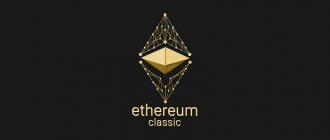What blockchain is needs to be defined at the very beginning of the article. When you hear the word blockchain in a conversation, you immediately understand that miners, traders, investors have gathered - people make money on cryptocurrencies. However, this concept has long left the narrow circle of professionals, and now many people operate with it. If you still haven’t figured out what it is, read our article, where we will tell you about blockchain in simple words.
Intermediary companies complicate life, complicate transactions and waste our time. Take, for example, a bank - not only will many transactions require personal information, but you will also spend a lot of time and money - banks live on interest from the finances circulating in the system.
During globalization, the emergence of cryptocurrencies and blockchain is natural and justified. Those who are “in the know” call this system a breakthrough of the century and a new step in the development of society. Those who are not privy to the nuances of the crypto world are wary of blockchain, Bitcoin, mining and cryptocurrencies, expecting the “bubble” to burst any day now.
Blockchain in the simplest words
Let's say you keep a personal accounting diary. You write down in it what you did, how you spent the money, how much you earned. Usually this diary is available in one copy.
With blockchain it’s different - transaction records are encrypted, and the diary itself (its copies) is simultaneously stored by all your friends. The entries in it are constantly updated, the information is relevant, and there is no risk of losing the diary - you can restore it again.
Blockchain (translated from English as “chain of blocks”) is, in simple words, the same diary or database, which is presented in the form of blocks that are stored on a large number of computers. New elements appear constantly as information accumulates. Each block contains all the accumulated information (that is, transaction records).
Security, decentralization, availability of data at any time of the day and anywhere - this is blockchain.
blockchain network
All blockchain data is stored on the computers of blockchain network users. All network users have equal rights and, generally speaking, can do whatever they want, including unsuccessfully trying to deceive other users. No one can prohibit them, because everyone is in equal conditions, has equal rights and can equally fulfill and even violate their duties.
Thus, the user of the blockchain network does not need any intermediaries, for example, banks, government agencies, auditors, controllers, insurance companies or registrars. Because there is no one to ask permission from, no one’s conveniently occupied position gives any additional rights or opportunities, no one’s authority protects you more than you can protect yourself.
Having entered the blockchain network, the user connects to other computers on the network in order to exchange data with them: blocks and records. It is important that this network is in no way tied to geography, that is, a user from Moscow can simultaneously connect to users from Beijing, London, New York and Buenos Aires. And this, by the way, also protects it from any regional peculiarities.
Having received new data, each user checks its correctness, and, once convinced of its accuracy, saves it and also transmits it further over the network. Thus, two types of data can circulate on the network - fake and real - which are distributed, respectively, by malicious and respectable participants. Each of the respectable participants, having discovered fake data, does not transmit it further. As a result, fake data wanders only between malicious participants, and honest participants exchange only correct data.
Network participants are divided into two groups: ordinary users who create new records, and miners who create blocks. The fact is that creating a block is a very resource-intensive and complex process, and therefore not everyone can or wants to do it.
Ordinary users create and distribute records across the network, for example, “user with key A transfers 300 money to user with key B” or “person with key A borrowed a car with key X.” As you can see, all records are open, but encrypted. If you know a car's key, you can tell if it's on a loan, but you won't know the owner's name or the name of the mortgagor bank unless they choose to make that information public.
Moreover, one person can have several keys, therefore, even knowing the key of the car owner A.B. Ivanov, it is impossible to find out whether A.B. has a mortgage loan. Ivanov, although this is the same person.
Next, miners collect records, verify them and write them into blocks, and then distribute these blocks throughout the network. After that, ordinary users receive blocks and save them so that they can correctly create their own and reliably check other people’s new records.
As long as a new entry is not included in any block, it is not considered reliable. Any network participant can use it only at their own peril and risk, since there is a possibility that it is an incorrect or even fake entry, and also that it may be cancelled. Therefore, usually participants simply send new records so that sooner or later it reaches the miner, who will include it in the block. And only when the entry is saved in the block, you can be sure that it is checked and correct and cannot be canceled. This is how blockchain works.
Blockchain: why is it needed?
All information about operations, transactions, payments and other actions is stored somewhere. Most often these are servers of banks, government organizations, and enterprises. This information can be changed, which is used by unscrupulous people. Blockchain technology or a chain of blocks, if translation from English is needed, is much more reliable. The transaction history is not stored in one place - it is distributed across thousands of computers around the world. In this form, it is more reliable to store data - it will not be lost, will not be lost, will not disappear.
This is the meaning of blockchain - to create a data storage system that is transparent and secure. The system has the main features:
- Safety;
- Openness;
- Distribution.
All information in the system is encoded, and choosing a code is unrealistic - it is too complex and not economically feasible.
To steal or change data, you will have to not just decode and change data on one server or computer, but on all of those in the system. Another option is to have control over 51% of Bitcoin's mining power.
Considering that there can be several hundred thousand or several million computers, it is almost impossible to change information on all devices. Even the signature contains two keys - public and private. Only the key allows access to the participant’s data.
Digital data is distributed across chains without the need for copying. This quality has led to blockchain technology becoming the foundation of a new type of Internet. Blockchain was originally developed as the basis for the bitcoin cryptocurrency, but digital technology experts predict a great future for it, finding new prospects for use.
Let's take another example - Wikipedia. It was created not by one user, but by many, and everyone can add new information to it, monitor it and control the entries. Something similar exists in blockchain: chains of blocks are not the product of an individual, but the result of the actions of people participating in the network. This is the principle of distribution - each participant is both a creator and a controller .
How it works?
We will, as expected, move from simpler to more complex. Because it was much easier to explain what the technology in question was than, without abusing special terms and concepts, to talk about how it works. Well, let's try:
- General concept. So, you and I have come to the conclusion that blockchain is a database. It consists of many blocks (blockchain), is simultaneously stored on thousands of computers and is characterized by such features as decentralization, distribution, transparency, protection from outside interference, confidentiality and the inability to change recorded information. The devices on which information is stored are not connected to a single server.
Blocks are a list of ordered records, their number is constantly growing. That is, new blocks appear containing links to previous and timestamps. Data encryption provides access to change information only directly to the owner, that is, the person who has the private key, and also, through encryption, the issue of synchronizing copies of the chain for all its participants is resolved.
Let's try to explain using an example from life. Let's say we are dealing with a medical history, naturally with its digital version. Any entry in such history can be considered a link (block) of the blockchain chain; it has a timestamp, that is, it is noted what date and time it was made. It is clear that correcting what is recorded in the history is strictly prohibited, since this can distort the picture of the disease and lead to incorrect treatment. In other words, it cannot be allowed that anyone can make any changes to the document at their own discretion, perhaps with the aim of harming the patient. Therefore, the only people with access to this document are the attending physician and the patient, each of whom has their own secret key. If the need arises, then access, of course, can be opened to other people (for example, some specialist invited for consultation), but this is only possible if one of the owners transfers the key to these people.
- Decentralization and data distribution. In our lives there is a lot of significant information that is stored somewhere. You got married, bought a car or a house, had children - all these events are recorded on the server of some public or private institution. They are stored centrally. And there is no centralized database that cannot be hacked in order to make changes to these data.
In blockchain, the approach is fundamentally different. Information is not stored in one specific place, but is distributed across a huge number of computers located in different parts of the planet. The system exists as long as at least one of these computers is working, and the option when all of them fail at the same time, you see, looks almost unrealistic.
- Safety. You don't have to worry about safety. Firstly, unlike centralized storage, here you need to hack all the computers on the network in order to make changes, and this requires such computing power that the “game” obviously won’t pay for itself. And, secondly, on the path of counterfeiters there is another serious obstacle in the form of a cipher and digital signature, which uses public and private (secret) keys.
- Openness and anonymity. On the one hand, the database is open to everyone, and everyone can familiarize themselves with the contents of the blocks. For example, find out that a transfer was made in the amount of 100 thousand dollars. But it is impossible to find out who exactly transferred this amount and to whom it was addressed, this is confidential information that can only be disclosed by the exchange participants themselves.
The essence of blockchain technology
What is the Bitcoin blockchain? Within the network, a table is created that is repeated many times (millions and thousands) on computers connected to this network. Each computer monitors the information and can control it, but trying to change this table on one computer will immediately reveal itself. This will be immediately noticed by other users who have an unchanged table. The network is protected from fraudsters and falsifications.
Openness of information for network users is the principle of this technology. An important advantage of distribution was the absence of intermediaries. Yes, sometimes you can hear that after a while the National Bank will become a kind of guarantor, performing the function of an intermediary, but in practice there is no place for an intermediary.
How does the Bitcoin blockchain network work?
Despite the abundance of information, understanding blockchain, even if explained in simple words, is quite difficult. What the essence is is easier to see with an example.
- You have a certain amount of money that you want to send to your friend from Russia to the States. You can use a bank, but they will charge you a commission, and most likely a considerable one, and besides, it will take time. If you don’t want to wait a week or overpay interest, use the blockchain.
- You create a wallet and buy bitcoins for the required amount. Your friend will also create a wallet to which you will need to send the amount in bitcoins.
- Miners create a block that contains transactions. He lines up in a chain. To create it, the hash of the previous block, the hash of all transactions and the nonce variable are used. These values are run through a specific algorithm, and the output is a hash of the new block. This is how the mining process happens.
- The transaction is confirmed, and your friend receives bitcoins in the required amount to their wallet. Bitcoins can be converted into fiat money or exchanged for other cryptocurrencies (altcoins). The main point is that blockchain made it possible to quickly transfer money.
The amount of the commission may vary - its amount is set by the creator of the transfer. A transaction with a small commission is slower - after all, all miners are interested in a larger reward, they set up equipment with priority for the highest commission. To ensure that transactions with small commissions are also transferred quickly, the block structure allows processing only 10% of super profitable transfers.
Why is blockchain needed?
Before moving on to a detailed study of the technology, let’s look at one of the most important questions - why is Blockchain needed and what is it used for?
Before the advent of cryptocurrencies and blockchain, any non-cash transactions could only take place through intermediaries in the form of banks and payment systems. Thus, all income and expenses of people were visible : intermediaries could track, cancel or freeze the transaction, which completely violated the financial freedom of users. Moreover, due to the presence of intermediaries, monetary transactions were slow and expensive.
Application of blockchain
Especially after the financial crisis of 2008, which is currently the largest crisis in the 21st century, it became clear that the traditional financial system had outlived its usefulness, and society needed new solutions with better opportunities.
Blockchain, which is a distributed database, has provided a more secure environment for information exchange and increased trust between counterparties.
Blockchain has become a simple and effective solution to problems that have arisen both in the financial sector and in other areas of life (manufacturing, logistics, energy, government, and even medicine).
Thus, the concept of blockchain was created for the transfer of value. Therefore, the technology finds application wherever it comes to the exchange and storage of documents, money and other valuable information.
Distributed storage
Any information must be stored somewhere. All data about these transactions that people make every day (buying a house, applying for a loan, money transfers) is recorded and placed on the servers of centralized government agencies or private companies. However, such a database can be easily penetrated and adjustments made.
Blockchain completely changes the approach to information storage.
The essence of the technology is that the database is stored distributedly, not in one place, but on many computers around the world. And as long as at least one computer (node) is working, the blockchain system will function.
Safety
So, any centralized database can be hacked and the information stored in it can be changed. In the Blockchain network, this is much more difficult , because in order to hack the system, you need to break all the blocks (each block stores data about the previous blocks in encrypted form). And, firstly, other network participants will definitely notice the hacking attempt, and, secondly, this requires enormous computing power.
Another barrier to system hacking is the powerful encryption algorithm using hash functions and a digital signature that protects every transaction.
A hash function is a sequence of random letters and numbers. It is due to this that the immutability of all recorded data is ensured.
As for the digital signature, it contains two keys that provide access to certain information. The public key is needed to verify the signature, the private key is used to create the signature and is secret information.
Thus, the security of the Blockchain network is based on strict mathematical calculations, and not on the unreasonable trust of participants in each other. ?
Openness
One of the principles of Blockchain is openness and transparency of information . The entire database is publicly available and anyone can view it. If Participant 1 transferred a certain amount of money to Participant 2, everyone can find out about it. But this information is of no use to other users, since the identities of the participants remain hidden until they themselves choose to disclose this information.
Interaction without intermediaries
In the traditional financial system, we constantly deal with intermediaries - banks, payment systems, exchangers, notaries. Sometimes a financial transaction may be completely rejected or frozen by the intermediary of the transaction.
It is difficult to trust intermediaries, and there is no reason to do so.
Blockchain allows users to directly exchange valuable data, and the authenticity of transactions in the system is verified directly by the network participants themselves.
What you need to know about hashing
We wrote above about hashing, but did not consider this term in detail.
Hashing is a basic element of cryptography, without which the entire operation of the system would not be possible.
Hashing is a check of the integrity of a digital or alphabetic message and is performed using a special algorithm. By running a message through this algorithm, a participant in the system hashes it, resulting in a hash. This hash is a kind of code that consists of 60 characters - letters or numbers.
The hash is sent to the recipient along with the message. The recipient runs it through the same algorithm, that is, decodes the message. The result is a hash identical to the one that was sent to him earlier. This encoding (in other words, hashing) confirms that no changes were made to the message. Hashing is an irreversible process. The message cannot be dehashed. If the message has already been received and acknowledged, it cannot be hashed again.
The founder of Bitcoin, Satoshi Nakamoto (by the way, it is still not clear whether this is one person or a group of people under a pseudonym) decided to connect hashes into a chain, obtaining a chain of blocks.
Transactions in the blockchain and the role of private keys
Above we talked about creating a Bitcoin wallet, but in fact, what is considered a wallet is not one. If we talk about a WebMoney wallet or other virtual currency, then bitcoins are stored on the blockchain according to a different principle. There is no control over the financial balance. But how does the system know whether you have enough funds to send, for example, 100 bitcoins to your friends?
Let's take a closer look at how transactions occur. The amount of bitcoins appears only in your wallet, that is, it is recorded only on your phone, for example, in the form of a hash. Blockchain does not know this information - it does not store it, does not record it, does not check it. If you need to send 100 btc to someone, the blockchain network will look for receipts to the wallet so that the amount of receipts is 100 bitcoins. Let’s say a thousand transactions of 0.1 bitcoin each came to your wallet - the system will add up these transactions, receive the required amount and understand that you have enough funds that can be sent to whomever you want.
Blockchain technology and its features
We mentioned earlier that information on Blockchain is open to anyone. This means that you can see the history of the transaction and the path along which it was made. Information about the size of the deal is also open. In this case, the identity of the addressee and sender is not disclosed. This is the transparency of the blockchain.
Access to Blockchain occurs using special keys that guarantee the reliability of the entire network. Every user has it. A key is a set of cryptographic records. It is absolutely unique, which guarantees the impossibility of data substitution and hacker attacks. To do this, attackers need to gain access to all computers on the network.
The mechanisms that ensure the functionality and reliability of the blockchain are the Proof of Work or PoW algorithms, the work done, and the Proof of Stake or PoS, confirmation of the share. Thanks to them, consensus is achieved in the blockchain.
The Proof of Work algorithm is used in the Bitcoin blockchain. The mechanism of its work is similar to reporting in the office. Employees regularly produce audit reports to confirm that they have completed a specific task. Without this, they will not receive a salary, since they have not confirmed the fact of the work done.
PoW in blockchain verifies the computations generated during the process of creating a new block. The following model is used here: a block is considered valid and closed, provided that its hash value is less than the signature sought by miners. That is, a certain cryptographic cipher indicates the authenticity of the block. And nodes act as “auditors” checking the authenticity of the block.
Now in the Bitcoin network, a block is created within 10 minutes. At this moment, the search for the signature is carried out. And the verification happens instantly. The algorithm is often criticized due to the fact that it requires large computing power to operate. And it is for this reason that a commission is charged when transferring bitcoins between wallets. This is how you pay for the used computing power.
Against this background, a new algorithm was created - Proof of Stake. One of the supporters of PoS is the founder of the Ethereum cryptocurrency Vitalik Buterin. According to him, this algorithm is not so resource-intensive, and in general, cheaper than PoW. The Ethereum cryptocurrency blockchain is transitioning from PoW to PoS.
If in Proof of Work computing power comes to the fore, then in Proof of Stake the wallet balance plays a role. The implementation and confirmation of transactions will occur without the active participation of computer technology, but thanks to active coins in wallets. Ideally, all owners of cryptocurrency on the PoS blockchain will act as investors. The role of mining will fade into the background. However, the algorithm has significant drawbacks - duplicate transactions are possible.
The optimal algorithm for blockchain may be a combination of PoS and PoW. So far, this mechanism has not been finalized, although it is used in some altcoins: KATZcoin, Blackcoin, Espers.
At this stage of its development, blockchain has both advantages and disadvantages. We have organized them into a table.
| Advantages | Flaws |
| Decentralization – network participants are equal to each other and can exchange data directly | Scalability – if the Bitcoin blockchain accounted for a share of Visa transactions, then its size would reach hundreds of terabytes |
| Reliability – data substitution and hacker attacks are excluded, as special encrypted keys are used | Fraud – the transfer of blockchain data is irreversible. Because of this, it is impossible to roll back an operation, even if it was carried out by mistake. |
| Transparency – all blocks are available for public viewing. You can check the path traveled for any transaction | 51% attack - if in the Bitcoin blockchain 51% of the computing power belongs to one device, then the integrity will be violated |
| Versatility - blockchain can be used not only in the financial sector, but also in other areas of life (law, real estate) |
Development of Blockchain technology
Miners, processing transactions, release new blocks and a new portion of bitcoins, for which they receive a reward. Simplicity and the ability to get cryptocurrency almost out of thin air are the main reasons why Bitcoin and blockchain have become so popular.
Blockchain, or block chain, as the translation from English says, from the very beginning positioned itself as a simple, transparent and fast technology. Its ancestral home is Japan, and only then it came to other countries. Initially, it was conceived as a counteraction to the imperfect banking system, so the developments are mainly used in the field of finance. However, if previously only narrow specialists worked with it, today this technology is entering our lives by leaps and bounds, and it will no longer be possible to brush it aside. And is it worth it? Many modern economists believe that blockchain is the future, and we find this reflected in the news of the world of cryptocurrencies.
Security, speed, openness of transactions and the principles of anonymity have led to the fact that even representatives of states and government agencies can no longer turn a blind eye to blockchain technologies used in cryptocurrencies.
And abroad, virtual money is used not only for transactions, but also for the purchase of almost any goods:
- online stores Amazon and eBay;
- some Subway restaurants;
- you can buy a ticket for airBaltic planes with bitcoins;
- in Cyprus you can pay for tuition with crypto;
- Dell was one of the first to accept payments for equipment using cryptocurrency.
The difference between Ethereum and Bitcoin
Bitcoin and Ethereum are the main cryptocurrencies that probably every advanced Internet user has heard of. Some consider them competitive systems, others – analogues. Ethereum and Bitcoin are constantly compared in terms of benefits, capitalization and popularity. Today, Bitcoin is winning by a margin, but the situation may change. The Bitcoin and Ethereum blockchain uses the PoW (Proof of Work) method of achieving distributed consensus; it is the miners who, thanks to PoW, ensure the security of the network.
What is the Ethereum blockchain? With Ethereum, everything is more complicated; it was originally created as a platform that was supposed to surpass Bitcoin. Ethereum is a kind of ecosystem for integrating new decentralized applications, a kind of service complex and the basis for creating a software product with the ability to mine ether coins.
New technologies have room to develop, and the natural rise in cryptocurrency rates confirms the fact that blockchain is needed today, and over time it will only gain momentum. There is confidence that we will soon see it in many areas of our lives, not only financial. Widespread distribution is only a matter of time. Very soon, every schoolchild will know about blockchain technology.
Great article 4











